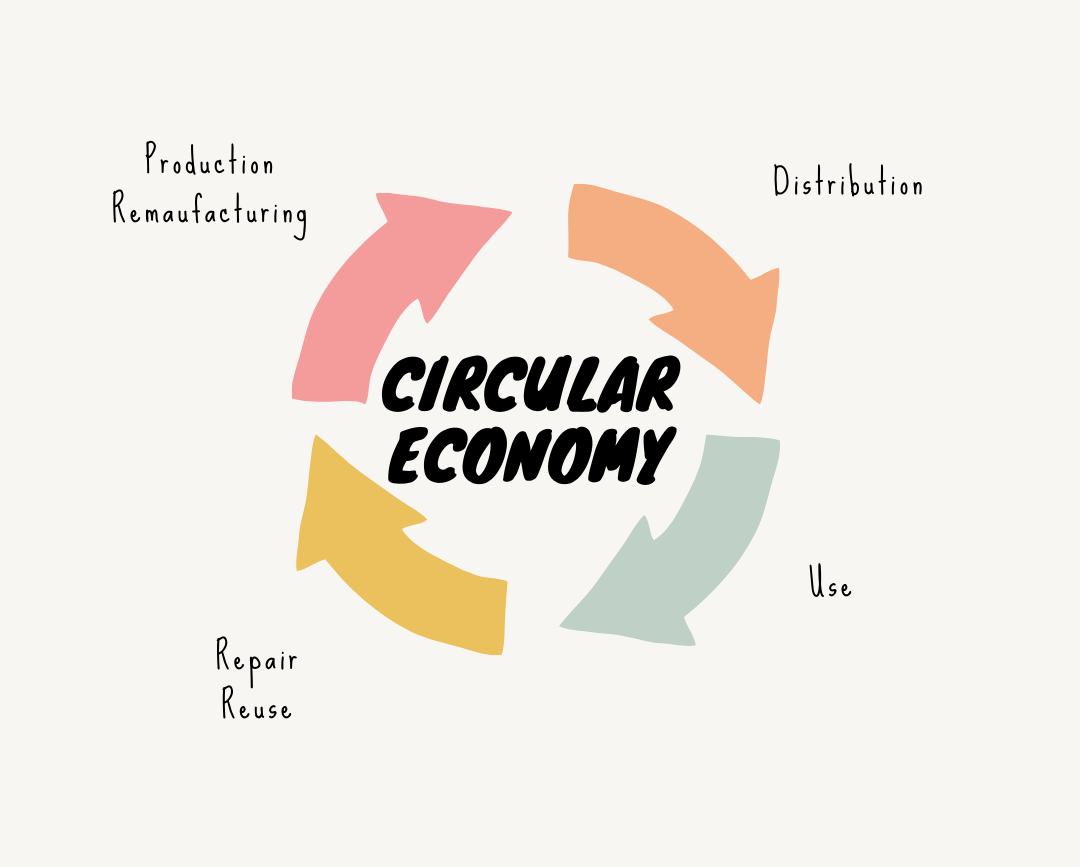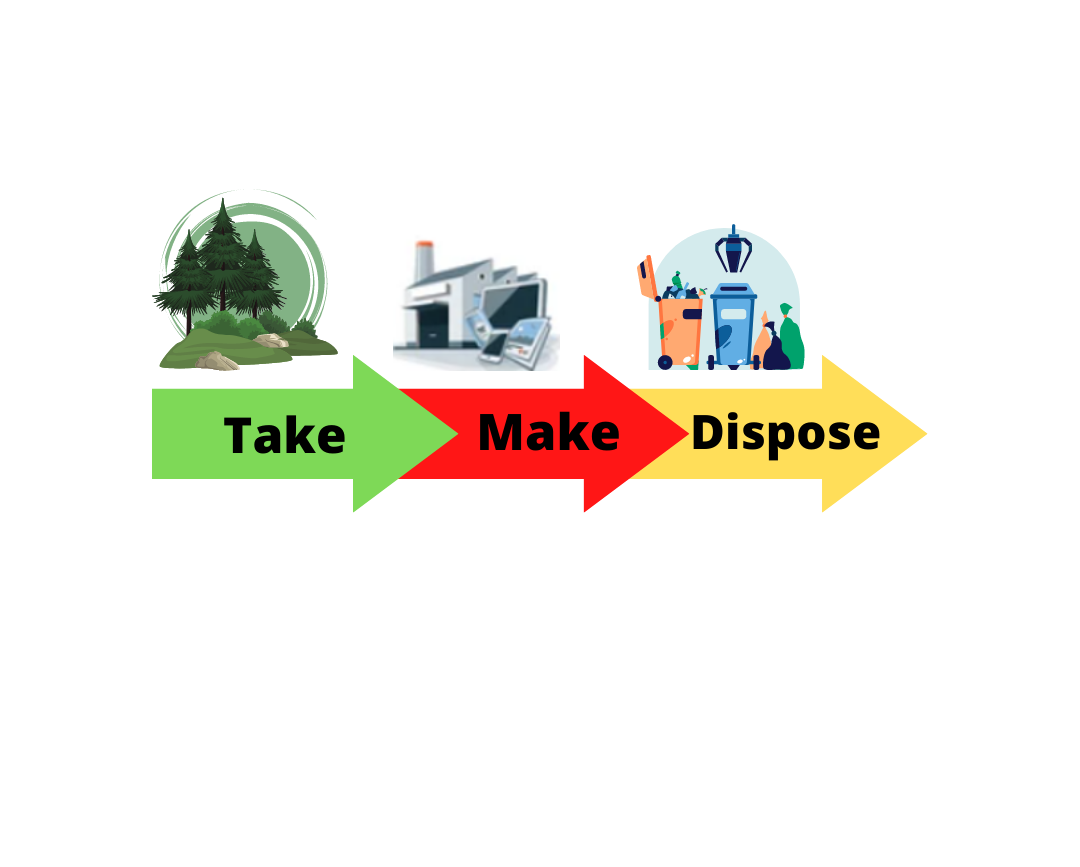Introduction of Linear Economy and Circular Economy:
As the impact of Plastic products boosted across the world, we rapidly started the Mass Production of different Products, Materials, and Goods with Plastic packaging or Plastic products. Eventually, we had to face a huge number of Industrial and Post-Consumer Waste problems. It was a very important agenda, and to decide to take some measures against this severely growing issue.
The matter of increasing Industrial and Post-consumer Waste was later on resolved by commencing the proposition of Linear Economy and Circular Economy. This Circular Economy and Linear Economy is an Economy that motivates Brand-owners, Producers, Distributors, and also Consumers in supporting the Nation for growth on an Economic and Environmental scale.
Linear Economy Vs Circular Economy
The description of these two Economies is further explained separately:
What is Linear Economy:

The Collection of Natural Raw Materials and conversion of these resources into different products and sold into the market. When any of these products has reached its validity’s end, the product needs to be disposed of. This process of Production, Distribution, and Disposing of various products is called the Linear Economy.
Linear Economy is based on the “Take-Make-Dispose” concept, in which the raw material is converted and made into a final product that can be used by the consumers and finally disposed of. This whole procedure represents the base of Linear Economy.
What is Circular Economy:

A Circular Economy is a type of Economy that mostly focuses on Reducing, Reusing, and Recycling. The Circular Economy is also known as the “Closed-Loop Economy”, which means that it closes the loop by using the least number of raw materials and also by reusing and recycling the existing products and materials as many times as possible.
This Circular Economy helps in creating a better Eco-friendly and Environment Sustainable Economy for any country. When the materials reach their End-of-life period they are recycled and can be reused for a longer period.
- Useful Articles: Dry Waste And Wet Waste Management | How To Segregate Waste?
What is “Take-Make-Dispose”?
“Take-Make-Dispose” is a procedure that helps Linear Economy work smoothly and manage collected Industrial and Consumer Waste. Take-Make-Dispose is the collection, production, and disposal of different products or materials after distribution. This procedure takes a lot of effort, hard work, and public participation.

In a Circular Economy when we work on Sustainability, the main focus is mostly on being Environment-friendly, which means we try to minimize the ecological effect of getting the same product. But in Linear Economy, the final product is made for being used till its final validity stages and is disposed of.
What is a Closed-loop Economy?
The Closed-loop economy is a process where every product is fully utilized even after its final use by the consumer. This economy supports the environment by fully making use of every
product and its packaging by least waste and recycling these products. Reusing recycled products and supporting sustainability is the main intent of this Circular Economy or Closed-loop economy.
What are the Challenges and Risks of the Linear and Circular Economies?
The Challenges and risks of Linear and Circular economies are further divided into two separate sections as follows:
Challenges and Risks of Linear Economy
In Linear Economy, the use of natural raw materials is the most for making different products which indirectly reduces the quantity of these natural materials and resources. This leads to the overuse of natural resources and also becomes the reason for the extinction of these nonrenewable resources.
The concept of take-make-dispose can be jeopardy to environmental surroundings due to the high demand and poor waste management system. But, by running Awareness Campaigns and Clean-up Drives we could reduce the pollution levels in the natural surroundings.
Challenges and Risks of Circular Economy
Even though business organizations confront several obstacles in reestablishing their supply chains for the Circular Economy it is a quite difficult job for them to execute the whole chain of the Circular Economy.
It is strenuous to replace the use of raw materials with recycled products, and the main task for the Brand-owners, Producers, Importers, and Manufacturers is to deal with Post-consumer Plastic Waste. It is a difficult 0procedure for them to collect this waste, so they hand over this responsibility to the Recycling Companies. The Shakti Plastic Industries deals with every type of plastic waste and assures give a 100% Recycled and Sustainable output that supports a Circular Economy.
Benefits of Linear Economy
- The Linear Economy supports a nation’s Economic growth and Environmental Sustainability.
- Positive impact on Business Organizations and on Environment.
- In Linear Economy, the production follows more Ecological-friendly ways of production and gives an output that is more Environment Sustainable.
Benefits of Circular Economy
- A circular economy lessens the use of Non-renewable or Natural Resources.
- A circular economy releases the least amount of Carbon Footprints into the Environment.
- Circular Economy focuses on the objective of Zero Environmental Wastage.
- The circular Economy provides a wide scope of opportunities for companies.
We are working hard for giving you a clean and better environment, all we need is your support.
